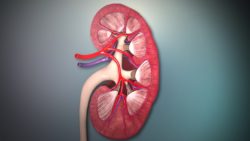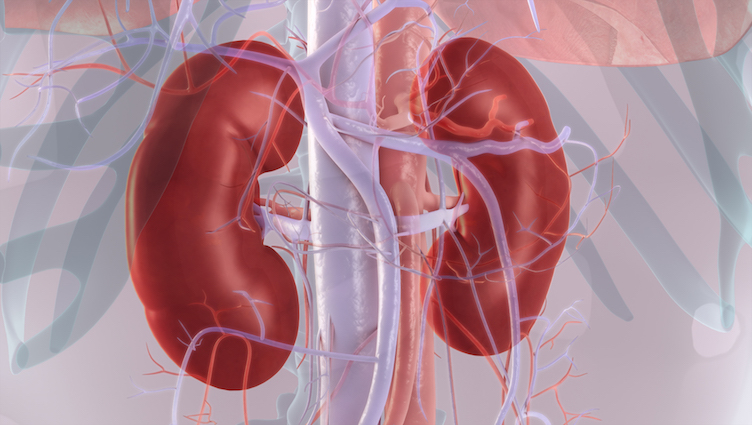
Causes of Chronic Kidney Disease (CKD):
The causes of chronic kidney failure vary. Hereditary disposition, diabetes2 or high blood sugar3, and high-blood pressure or renal hypertension are commonly correlated to CKD. But in reality, many potential causes exist: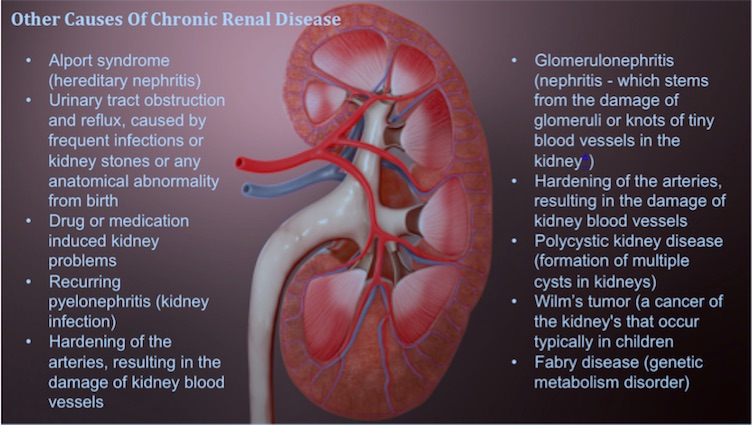
The various stages of Chronic Kidney Disease (CKD):
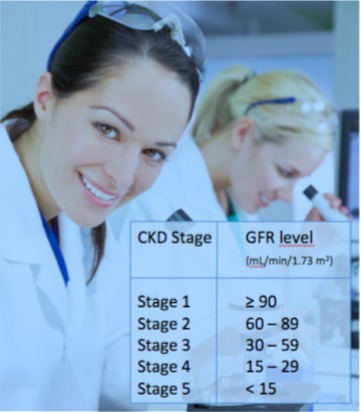
The Stages of CKD are classified according to the Glomerular Filtration Rate or GFR. Inside every nephron is a structure called a glomerulus. The GFR measures the flow rate of blood through the glomeruli in the Kidney, thereby, measuring how effectively the kidney filters. People with a GFR rate of less than 60 (measured in mL/min/1.73 m2) for 3 months5, irrespective of the nature of kidney damage, are considered as candidates for CKD. A GFR of this level indicates reduced kidney function. The GFR level also helps to classify the Stage of CKD, as seen in the table. The condition of the kidney’s can also be described at each stage. Often stage 3 is divided into Stage 3a and Stage 3b. The levels corresponding to the different stages can be seen in the table to the right.
STAGE 1 – Diagnosis Method: Luck
In the first stage, the kidney has just begun to behave abnormally and thus exhibits slightly diminished qualities. The GFR will be at a normal or high level, which is greater than 90mL/min. At this stage, it is difficult to diagnose the disease, as there will be very little in the way of symptoms. Generally, CKD at this stage is diagnosed while a patient is being tested for something else, like diabetes or high blood pressure. Potential markers at this stage include6:- Higher level of creatinine or urea in blood
- Kidney damage found in an MRI or CT scan
- Blood or protein in urine
STAGE 2 - Onset of GFR indications
The second stage is not very different from the first, and hence the Chronic Kidney Disease symptoms or probability of diagnosis are similar to that of the first stage. But a decrease in GFR, to 60-89, will be used to distinguish the stages. Symptoms may be sporadic or easily confused with other potential ailments, making it hard for the physician to suspect, and therefore, order the test.STAGE 3 - Undeniable
A sustained decrease in GFR to 30-59 is a clear indication of CKD. The kidney function has noticeably declines in this stage, and bodily refuse starts to build up in the blood, causing uremia. At stage 3 a person is likely to face complicated kidney problems as well as anemia or early bone disease. There will be clearer symptoms6 at this stage, such as:- Fatigue - Tiredness in a CKD-affected person is often caused by anemia.
- Excessive fluid - The kidneys fail to control fluid retention, thus causing edema (swelling) in the lower legs, hands or face. This may also cause shortness of breath.
- Changes in urine - The regularity of urination begins to vary, and the urine can become foamy due to excess of protein in it, or dark orange, brown, or reddish due to the presence of blood.
- Kidney/back pain - People with polycystic kidney disease (PKD) or some kind of infection may often suffer from intolerable pain in the back, where the kidneys are situated.
- Problems during sleep - Due to muscle cramps, itching or restless legs the person can often feel sleep deprived, or have disturbed sleep.
STAGE 4 - Severe
Severe decrease in GFR to 15-30 ml/min. At this stage a person is likely to be in need of dialysis or a kidney transplant. Along with the complications faced at stage 3, the person also suffers from heart disease and other cardiovascular diseases. The symptoms at the third stage remain, along with a few others:- Nausea - At the third stage a person is often likely to feel nauseated.
- Change in taste - A metallic taste persists in the mouth, and due to this change in taste, there could also be a loss in appetite.
- Uremic breath - Due to the excess accumulation of waste, uremia, bad breath is detected at this stage.
- Nerve problems - Numbness, tingling in toes and fingers, or lowered concentration are all symptomatic of the third stage of CKD.
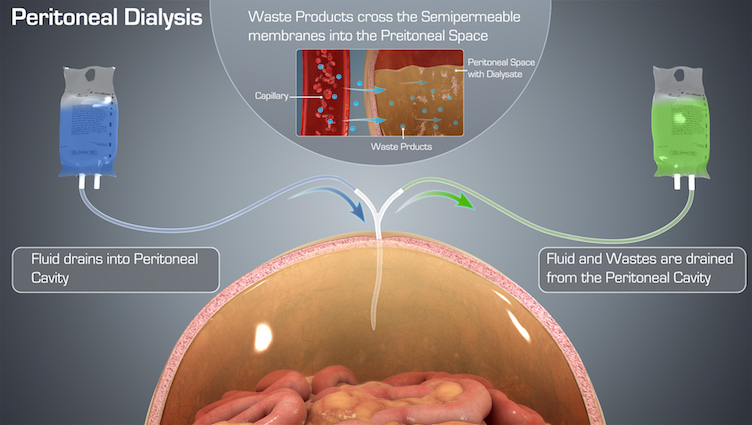
STAGE 5 - Critical
The fifth stage of Chronic Kidney Disease is called End Stage Renal Disease (ESRD) and has the GFR decreased to 15 ml/min or less. At this stage, the kidneys lose all their abilities and are on the verge of failing. A kidney transplant or regular dialysis becomes imperative at this stage. The symptoms of the earlier stages persist and are likely to be enhanced. With the total failure of the kidneys to filter waste and toxic products, there will be a constant ill feeling. There will be no regulation of blood pressure. Production of hormones that help in making red blood cells or activating vitamin D for bones is also hampered and haphazard. The symptoms of the earlier stages persist and are likely to be enhanced. With the total failure of the kidneys to filter waste and toxic products, there will be a constant ill feeling. There will be no regulation of blood pressure. Production of hormones that help in making red blood cells or activating vitamin D for bones is also hampered and haphazard.Conceiving with CKD- What you need to know
Although pregnancy can occur at any stage of CKD severity, the kidney disease directly impacts a woman’s fertility and often leads to adverse pregnancy outcomes such as fetal growth restriction and increase in the rate of preterm delivery. It may also lead to post-partum loss of maternal renal function. Owing to trends in women’s health and renal disease, fertility issues linked to CKD are of prime importance to both nephrologists as well as obstetricians. Pre-pregnancy counselling before conception is strongly recommended in such cases.Objects in mirror are closer than they appear
1/3 of all Americans are at risk for CKD. GFR levels can be calculated base on creatinine levels. And like heart disease, symptoms are not often recognizable until the disease has progressed beyond initial stages. Keeping track of risk factors as well as your GFR if you are at risk is recommended. Citations:- https://www.webmd.com/a-to-z-guides/chronic-kidney-disease-topic-overview
- https://chealth.canoe.ca/channel_condition_info_details.asp?disease_id=258&channe l_id=143&relation_id=1711
- https://www.kidney.ca/page.aspx?pid=321
- https://www.healthline.com/health/glomerulonephritis#Overview
- https://en.wikipedia.org/wiki/Chronic_kidney_disease
- https://www.davita.com/kidney-disease/overview/stages-of-kidney-disease/stage- 2-of-chronic-kidney-disease/e/4747
- https://www.medicinenet.com/hemodialysis/article.htm
- https://www.kidneypatientguide.org.uk/pd.php
- https://www.webmd.com/a-to-z-guides/kidney-transplant-20666
- https://www.nature.com/articles/nrneph.2017.187
